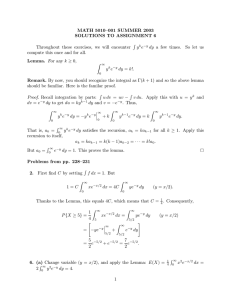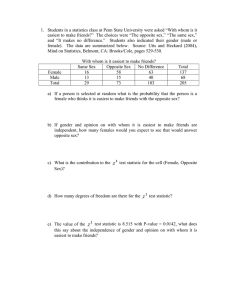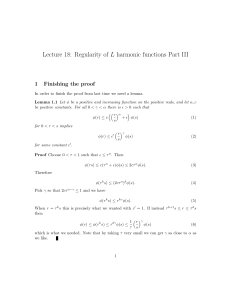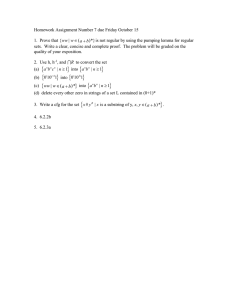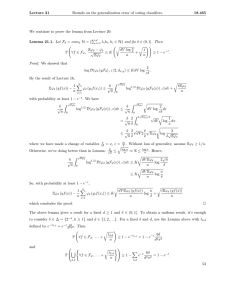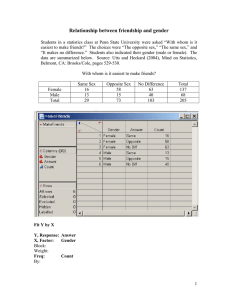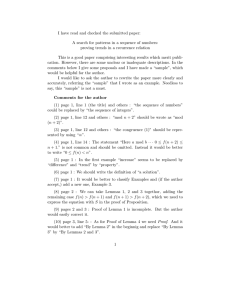Exercise 1, Chapter 4. (Math 414-501, Spring 2010)
advertisement
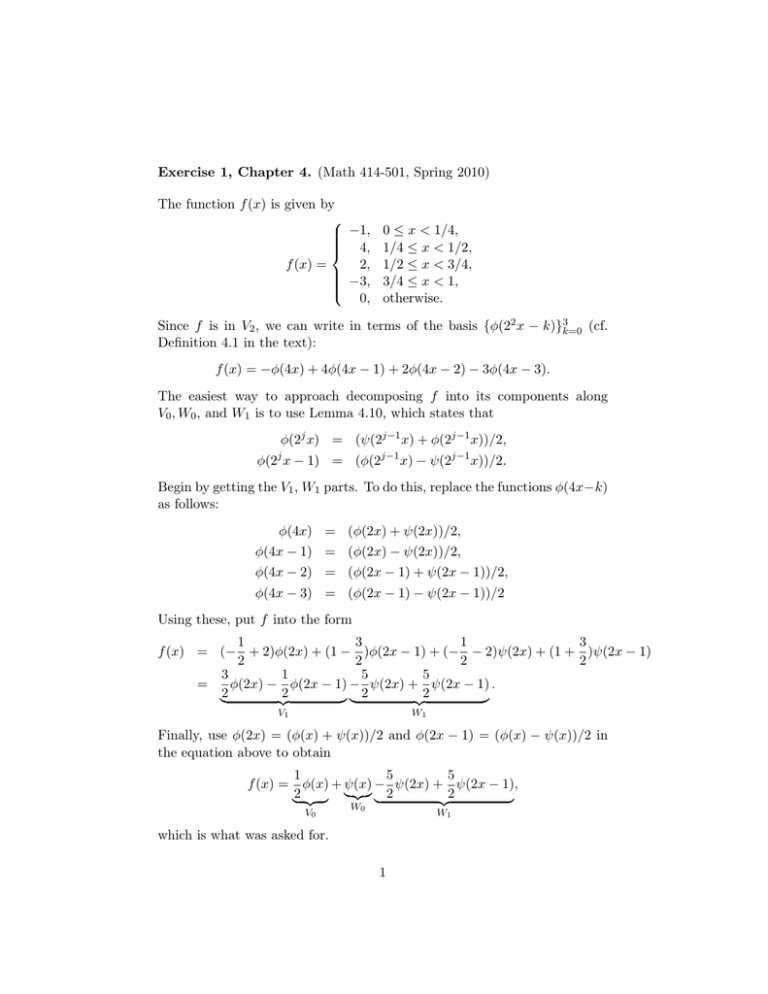
Exercise 1, Chapter 4. (Math 414-501, Spring 2010)
The function f (x) is given by
−1, 0 ≤ x < 1/4,
4, 1/4 ≤ x < 1/2,
2, 1/2 ≤ x < 3/4,
f (x) =
−3,
3/4 ≤ x < 1,
0, otherwise.
Since f is in V2 , we can write in terms of the basis {φ(22 x − k)}3k=0 (cf.
Definition 4.1 in the text):
f (x) = −φ(4x) + 4φ(4x − 1) + 2φ(4x − 2) − 3φ(4x − 3).
The easiest way to approach decomposing f into its components along
V0 , W0 , and W1 is to use Lemma 4.10, which states that
φ(2j x) = (ψ(2j−1 x) + φ(2j−1 x))/2,
φ(2j x − 1) = (φ(2j−1 x) − ψ(2j−1 x))/2.
Begin by getting the V1 , W1 parts. To do this, replace the functions φ(4x−k)
as follows:
φ(4x) = (φ(2x) + ψ(2x))/2,
φ(4x − 1) = (φ(2x) − ψ(2x))/2,
φ(4x − 2) = (φ(2x − 1) + ψ(2x − 1))/2,
φ(4x − 3) = (φ(2x − 1) − ψ(2x − 1))/2
Using these, put f into the form
1
3
1
3
f (x) = (− + 2)φ(2x) + (1 − )φ(2x − 1) + (− − 2)ψ(2x) + (1 + )ψ(2x − 1)
2
2
2
2
3
1
5
5
=
φ(2x) − φ(2x − 1) − ψ(2x) + ψ(2x − 1) .
2
|2
{z
}| 2
{z2
}
V1
W1
Finally, use φ(2x) = (φ(x) + ψ(x))/2 and φ(2x − 1) = (φ(x) − ψ(x))/2 in
the equation above to obtain
1
5
5
f (x) = φ(x) + ψ(x) − ψ(2x) + ψ(2x − 1),
|
{z
}
|2 {z }
| 2
{z2
}
V0
W0
W1
which is what was asked for.
1





